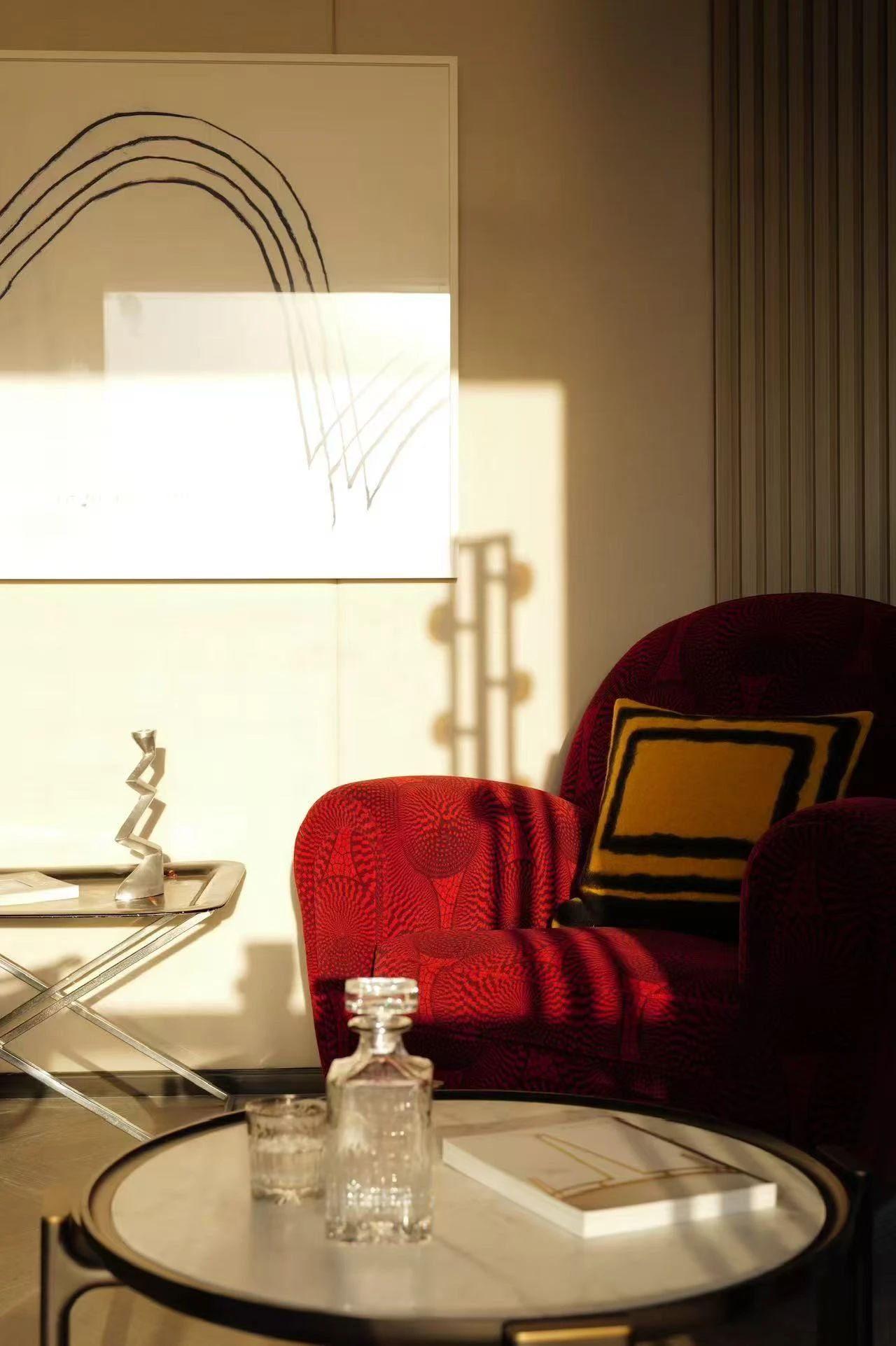Art Gallery in Buenos Aires Nicolás Fernández Sanz
2015-10-03 13:00
Text description provided by the architects. LIGHT AND TRADE
该项目是为20世纪中叶在达尔文和圣马丁铁路线交叉口之间的拉米雷斯德维拉斯科街(ramírez de vielco Street)建造的一个仓库空间设计的。单调的立面绝不意味着向地块中央延伸的广阔空间。多年来,这个充满空气和光的大型工业容器被用来存储工业零件。
The project was designed for a warehouse space constructed in the mid-20th century on Ramírez de Velasco Street, between Darwin and a crossing of the San Martín train line. The drab facade in no way suggests the vast space that stretches out towards the center of the block. For many years, this large industrial vessel full of air and light was used to store industrial parts.
该项目的目的是将这一空间变成具有历史意义的Galería de Arte Ruth Benzacar的第四个所在地。它将面临艰难的挑战,在佛罗里达街1000号的地下空间-在阿根廷的前卫艺术中扮演了重要角色的场所-30年来,画廊从那里获得了国际声誉。这一举动让人们缅怀了市中心的摩天大楼、布宜诺斯艾利斯最著名的步行街和林西广场圣马丁(SanMartín)。在新城区,画廊发现了沿着铁轨两侧生长的高草,以及铺成鹅卵石砌成的小街道、低矮的房屋和旧工厂。这一举动恰逢这个城市的艺术地理发生了一些重大变化;它再次证明了克雷斯波别墅是当地艺术圈的一个新的焦点。
The aim of the project was to turn this space into the fourth seat of the historic Galería de Arte Ruth Benzacar. It would face the difficult challenge of coming after the underground space at 1000 Florida Street—a venue that played a key role in Argentine avant-garde art for thirty years and the space from which the gallery gained international prestige. The move leaves to memory the skyscrapers of downtown, the most famous walking street in Buenos Aires, and the woodsy Plaza San Martín. In the new district, the gallery finds the high grasses that grow along both sides of the tracks and a tangle of small paved and cobblestoned streets, low houses, and old factories. The move coincides with a number of important changes in the city’s artistic geography; it reaffirms Villa Crespo as a new focal point on the local art circuit.
从本质上说,该项目是一种利用现有元素和空间而不是强行强加理想的干预措施。它利用一切正常运转的东西;空间的分布,以及探索它的方式,反映了仓库本身。
The project is, in essence, an intervention that uses existing elements and spaces rather than forcibly imposes an ideal. It makes use of everything that was in working order; the distribution of the space, as well as ways of exploring it, reflect the warehouse itself.
混凝土楼板是拉米雷斯·德·贝拉斯科街(Ramírez de Villico Street)沥青路面的延续。在那里,这架飞机从人行道和作为画廊入口处的大车库门开始。同样的表面在空间内部工作,在后面形成展览墙。地板上的混凝土刷去任何缺口,平滑了近50厘米。坡度超过地形长度的坡度。
The concrete slab floor is a continuation of the asphalt of Ramírez de Velasco Street, where that plane begins as it rises over the sidewalk and the large garage door that serves as the gallery’s entrance. The same surface then works its way inside the space, forming the exhibition wall in the back. The concrete on the floor was brushed to remove any notches, smoothing out the nearly 50 cm. slope over the length of the terrain.
主要的建筑决定是在仓库中央建造一个房间,而不是把仓库打扮成一个艺术画廊。正是在这一决定的基础上,设想和组织了设在不同空间的画廊的功能需求。主空间的北半部是在一个预先存在的阁楼的基础上划分的。四米高的砖墙是在另一半周围建造的,以形成最初的展览空间。这些墙也有助于消除原来的墙柱和不规则之处。专门为该项目建造的无瑕灰泥墙提供了一种方法,以消除地板和电气配件,将中断他们的表面。
The primary architectural decision was to construct a room in the middle of the warehouse rather than “to dress the warehouse up” as an art gallery. It was on the basis of that decision that the functional needs of the gallery housed in different spaces were conceived and organized. The northern half of the main space was compartmentalized on the basis of a pre-existing loft. Four-meter-high brick walls were built around the other half to give shape to the primary exhibition space. These walls also served to do away with the original walls’ columns and irregularities. Specifically constructed for the project, the immaculate plaster walls provided a way to eliminate the floor boards and electrical fittings that would interrupt their surfaces.
位于低矮的阁楼上,通过旋转门与主空间相连,服务区和后台制定了不同的探索空间的方法。通往办公区域的主楼梯被上面提到的一堵新墙遮住了。由于其宽敞的尺寸和巨大的落地,这一空间可供艺术家和画廊的工作人员使用。也许画廊最独特的细节是沿其周边延伸的盒座式空间,从这个空间可以观察到下面的展览;这个空间是楼梯与阁楼以直角相接的结果。在左边,办公室可以看到巨大的展览空间。两者都沐浴在光线中,光线从天窗进来,穿过仓库空间的核心。
Located on a low loft and connected to the main space by stairs reached through pivoting doors, the service areas and backrooms formulate different ways of exploring the space. The main stairway, which leads to the office area, is concealed by one of the new walls mentioned above. Thanks to its generous dimensions and large landing, this space can be used by artists and the gallery’s staff. Perhaps the gallery’s most distinctive detail is box seat-like space that stretches along its perimeter, a space from which the exhibitions below can be observed; this space is the result of the staircase meeting the loft at a right angle. To the left, the offices look over the large exhibition space. Both are bathed in light that comes in through the skylight and runs through the core of the warehouse space.
在设计中,我们充分意识到,该项目的任务是允许一系列的主观性,将发现在新砖块和旧暴露梁和锡屋顶的多重含义。该项目的主要特点和意图是沉默和半透明。在物质、城市和象征经济中,白色仓库优先于白色立方体。这个项目的目标是拥有一种与其作品同时代的精神。
In the design, we were fully aware that the mission of the project was to allow for an array of subjectivities that would find multiple meanings in both the new bricks and the old exposed beams and tin roofs. The primary attributes and intentions of the project were silence and translucence. The white warehouse takes precedence over the white cube in material, urban, and symbolic economies. The ambition of the project is to possess a spirit contemporary with the works it houses.
Carlos Huffmann-Nicolás Fernández Sanz.
Carlos Huffmann - Nicolás Fernández Sanz.
(Translation by Jane Brodie)
Architects Nicolás Fernández Sanz
Location Juan Ramírez de Velasco 1287, C1414AQY CABA, Argentina
Design Team Arq. María Laura Gonzalez
Photographs Javier Agustín Rojas
 举报
举报
别默默的看了,快登录帮我评论一下吧!:)
注册
登录
更多评论
相关文章
-

描边风设计中,最容易犯的8种问题分析
2018年走过了四分之一,LOGO设计趋势也清晰了LOGO设计
-

描边风设计中,最容易犯的8种问题分析
2018年走过了四分之一,LOGO设计趋势也清晰了LOGO设计
-

描边风设计中,最容易犯的8种问题分析
2018年走过了四分之一,LOGO设计趋势也清晰了LOGO设计












































































